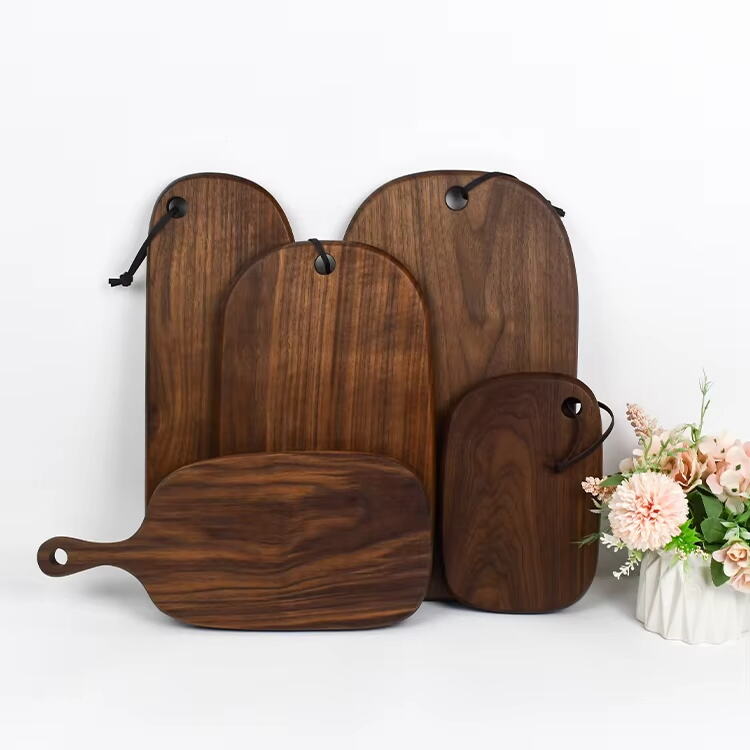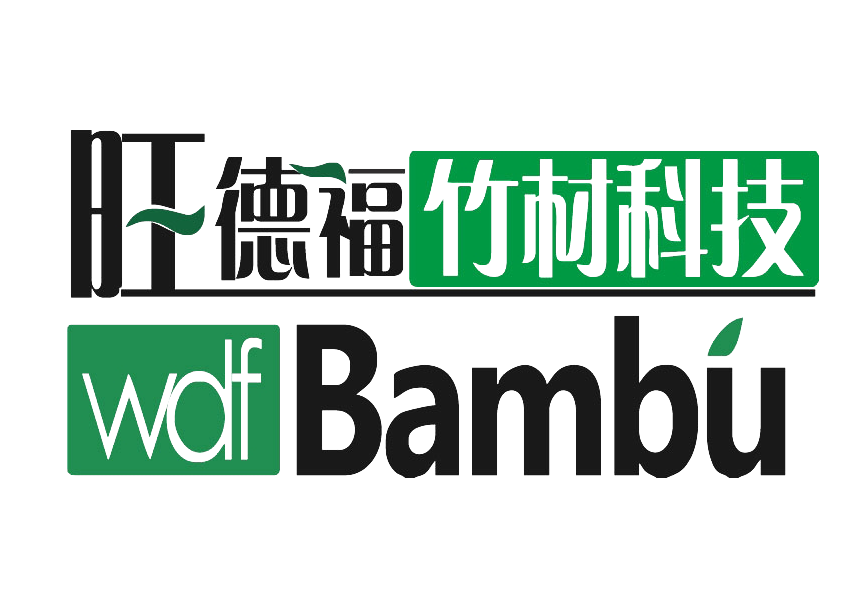도마 세트의 일반적인 재료들
나무: 메이플, 호두, 벚나무의 특징
나무 도마를 고려하는 사람들에게 메이플, 호두나무, 체리는 각기 다른 특성을 지니고 있어 주목할 만합니다. 메이플 도마는 매우 단단하며 결이 조밀해 오래 사용해도 칼날을 크게 손상시키지 않습니다. 또한 습기나 박테리아를 쉽게 흡수하지 않아 일상적인 주방 사용에 안전한 선택입니다. 호두나무는 어두운 갈색의 고급스러운 색상을 지니고 있어 조리대 위에서 돋보이며, 메이플보다는 약간 부드러워 칼날의 마모를 덜 유발합니다. 체리나무는 단단함 면에서는 메이플 다음으로 꼽히지만, 시간이 지날수록 더 풍부해지는 붉은 갈색 빛이 아름다워 많은 요리사들이 주방에서 사용하는 것을 좋아합니다. 메이플과 체리나무는 모두 표면에 세균이 번식하는 것을 억제하는 천연 방어 기능을 가지고 있어 음식 준비 시 추가적인 보호 기능을 제공합니다.
연구에 따르면 단단한 경재는 꾸준한 관리, 예를 들어 오일을 발라주고 건조하게 유지해 주는 것이 필요하지만, 뛰어난 내구성으로 인해 두드러지게 좋은 평가를 받습니다. 이러한 추가 관리 작업은 시간이 지남에 따라 보상받을 수 있는데, 이러한 나무들은 자연스럽게 풍부한 안료층(패티나)을 형성하여 시간이 지날수록 더욱 아름다운 외관을 띠게 됩니다. 가격을 비교해 보면 메이플과 월넛은 일반적으로 체리 우드보다 비용이 더 들며, 많은 소비자들이 예산에 따라 어떤 나무를 선택할지 고려하는 요소가 됩니다. 대부분의 사람들은 자신이 지불할 수 있는 금액, 개인적으로 어떤 나무가 시각적으로 매력적인지, 그리고 특정 종류의 나무를 최상의 상태로 유지하는 데 필요한 관리 작업을 감당할 수 있는지에 따라 여러 나무 중에서 선택하게 됩니다.
대나무: 지속 가능성과 단단함
사람들이 대나무 재질의 도마를 점점 선호하고 있는데, 이는 환경에 더 좋을 뿐만 아니라 기능도 괜찮기 때문입니다. 대나무의 경우 일반 경재에 비해 훨씬 빠르게 자라기 때문에 채취에도 큰 부담이 없습니다. 이러한 도마의 특징은 재질이 밀도가 높아서 잘 베어지고 자르는 작업에도 견고한 표면을 제공합니다. 하지만 주의할 점도 있습니다. 날카로운 칼을 대나무 도마에서 사용하면 칼날이 빨리 무뎌질 수 있기 때문에, 날카로움을 오래 유지하고 싶다면 염두에 둘 필요가 있습니다. 그래도 대나무 도마는 단단하면서도 의외로 가벼워서 사용하기 편리할 뿐만 아니라 식사 후에도 옮기고 세척하는 데 매우 편리합니다.
연구에 따르면 대나무 도마는 번잡한 주방 환경에서 경재 도마와 거의 비슷한 수명을 보입니다. 이러한 도마를 오래 사용하려면 정기적으로 기름을 발라 관리해 주는 것이 좋습니다. 그러면 매일 사용하더라도 손상이 거의 없이 오래 사용할 수 있습니다. 대나무는 또 다른 장점도 있는데, 다른 재질에 비해 수분과 박테리아 흡수가 거의 일어나지 않아 식사 사이에도 깨끗한 표면을 유지할 수 있습니다. 대나무가 친환경 소재로 잘 알려져 있지만, 제조 과정도 꼼꼼히 확인하는 것이 좋습니다. 일부 제조사에서는 대나무 제품을 화학물질로 처리하기도 하므로 구매 전 라벨을 반드시 확인해야 합니다.
플라스틱: 비용 효율성과 위생 고려사항
플라스틱 도마는 비교적 저렴할 뿐만 아니라 대부분의 가정 주방에서 충분히 위생적이라고 여겨집니다. 가격이 부담되지 않기 때문에 많은 사람들이 부담 없이 구입할 수 있습니다. 대부분의 모델은 사용 후 식기세척기에 바로 넣을 수 있기 때문에 청소도 간단하고 전반적으로 관리가 용이합니다. 또한 플라스틱은 나무처럼 물을 흡수하지 않기 때문에 시간이 지나도 박테리아가 번식하거나 냄새가 발생할 가능성이 적습니다. 이러한 특성 덕분에 위생적으로 관리하는 측면에서 플라스틱 도마는 나무 도마와 같은 다른 재질의 도마보다 우수하다고 할 수 있습니다.
숫자를 보면 플라스틱 도마가 오랫동안 부엌 카운터에 널리 사용되고 있음을 알 수 있습니다. 그 매끄러운 표면은 나무 도마처럼 박테리아를 오래 머금지 않기 때문에 식품 안전을 중시하는 사람들 사이에서 인기가 많습니다. 하지만 기억해야 할 점은, 플라스틱 도마가 사용 중에 생긴 깊은 자국과 홈자국이 쌓이기 시작하면 오히려 세균이 묻히는 함정이 될 수 있다는 것입니다. 대부분의 사람들은 새 도마가 가격이 저렴하고 보관 공간도 거의 차지하지 않기 때문에 도마가 거의 해어지기 직전까지 계속 사용합니다. 이러한 저렴한 가격과 손쉬운 청소 덕분에 흠이 생겼다 하더라도 미국 전역의 부엌 카운터 위에 플라스틱 도마가 여전히 자리하고 있는 것입니다.
절단판 내구성을 결정짓는 요소들
물질 밀도와 칼 저항
도마 재질의 밀도는 절단 및 긁힘에 저항하는 데 있어 매우 중요한 차이를 만든다. 메이플 나무와 같이 밀도가 높은 재료는 칼자국이 적게 나타나고 오래 사용할 수 있기 때문에, 오랜 시간 동안 실용성을 유지하면서 외관도 오래도록 좋게 보존한다. 이러한 도마를 사용하는 사람들은 나무 종류에 따라 칼날의 마모 정도가 달라지는 것을 실제로 체감하게 되는데, 밀도가 높은 나무일수록 시간이 지나도 더 오래 견딘다. 예를 들어 메이플과 체리 나무는 반복적인 다용도 절단 작업에도 손상이 거의 없을 만큼 단단한 밀도를 자랑한다. 도마가 칼날의 충격에 저항하는 방식은 표면 마모로 인해 교체가 필요한 시점까지의 수명에 직접적인 영향을 미친다. 따라서 주방에서 매일 사용하는 작업을 견뎌내며 오래도록 사용하려면 충분한 밀도를 갖춘 도마를 선택하는 것이 매우 중요하다.
수분 흡수 및 왜곡 저항
도마의 경우, 다양한 재질에서 휨 현상의 주요 원인 중 하나는 여전히 습기 흡수입니다. 단풍나무와 체리나무는 자연적으로 습기에 더 잘 견디기 때문에 물이나 다른 주방 액체와 접촉한 후에 팽창하거나 휠 가능성이 적습니다. 주방 소유자들은 이를 잘 알고 있는데, 이러한 도마들이 싱크대와 음식 준비 공간 근처에서 오랜 시간 동안 사용되기 때문입니다. 실제로 연구에서도 습기 손상에 취약한 도마들이 다른 도마들보다 훨씬 빠르게 마모 증상을 보이며 장기적으로 내구성이 떨어지는 것으로 나타났습니다. 대나무는 습기로 인한 팽창에 효과적으로 저항하기 때문에 대안 소재로서 인기를 끌고 있습니다. 휘지 않은 도마 표면을 유지하려는 사람들에게는 내재적인 습기 저항성을 가진 재질을 선택하는 것이 실용적이고 경제적인 선택입니다. 이러한 선택은 어떤 종류의 요리가 진행되든 도마의 구조적 완전성을 장기간 유지하는 데 도움이 됩니다.

나무 vs. 대나무 vs. 플라스틱: 내구성 비교
경목 절임판의 수명
나무 도마는 관리만 잘 해준다면 오래 사용할 수 있는 내구성 측면에서 확실히 두드러집니다. 대부분의 사람들은 품질이 좋은 나무 도마가 적절한 관리를 받는다면 수년에서 수십 년까지 사용할 수 있다는 점을 발견합니다. 요리사들이 자주 사용하는 팁 중 하나는 도마 표면에 식품 등급 미네랄 오일을 정기적으로 발라 나무가 마르지 않도록 하여 균열이 생기지 않게 하는 것입니다. 예를 들어 존 부스 앤드 컴퍼니(John Boos & Co)는 오랫동안 최고 품질의 단풍나무 도마를 제작해왔으며 제품의 수명을 극대화하기 위해 지속적인 관리가 얼마나 중요한지 강조합니다. 물론 나무 도마는 시중의 플라스틱 제품에 비해 초기 비용이 더 들 수 있지만 이렇게 생각해 보세요: 쉽게 부서지지 않으며 몇 달마다 교체할 필요가 없기 때문에 장기적으로 보면 비용을 절약할 수 있습니다. 처음 구매할 때의 부담은 사람들이 매일 채소를 썰고, 허브를 다지며, 다양한 주방 작업을 아무런 걱정 없이 수행하다 보면 금세 사라지게 됩니다.
대나무의 긁힘에 취약한 특성
대나무 재질의 도마는 친환경적이라는 장점이 있고, 나무나 플라스틱 제품보다 가볍게 느껴지긴 하지만 칼자국에 견디는 내구성이 떨어집니다. 표면이 쉽게 긁혀서 외관이 망가질 뿐만 아니라 청소에도 어려움이 생기죠. 깊게 파인 자국에는 오염물과 박테리아가 쉽게 쌓여서 정기적인 청소가 번거롭고, 식품 위생에도 문제가 생길 수 있습니다. 많은 사용자들이 이 도마를 구입한 후 일반 주방에서 몇 달 쓰지 않아 금방 닳아 보인다고 불평하곤 합니다. 그래서 대나무가 환경에는 좋지만 오래 쓰면서 위생도 잘 유지하려는 사람이라면 다른 선택지를 고려해 보는 게 좋을지도 모릅니다.
플라스틱의 시간이 지남에 따른 열화 현상
플라스틱 도마는 처음에는 편리해 보이지만 사용 시간이 지나면 쉽게 마모되기 쉽습니다. 표면은 일반적인 주방 활동 중 금세 긁히게 되고, 음식 찌꺼지가 머물고 박테리아가 번식하기 좋은 작은 홈이 생기게 됩니다. 이러한 현상이 발생하면 청소가 상당히 번거로워집니다. 환경적인 측면에서도 대부분의 사람들이 플라스틱 도마를 제대로 재활용하는 데 어려움을 겪기 때문에 이러한 도마는 결국 매립지 문제를 악화시키는 요인 중 하나가 됩니다. 집에서 요리하는 사람들은 도마에 깊은 상처 자국이나 변색 같은 변화가 생기는지 주의 깊게 살펴보아야 하며, 이러한 증상은 곧 교체 시기가 되었음을 알려줍니다. 물론 플라스틱 도마는 처음에는 저렴하고 닦기 쉬운 장점이 있지만, 오랜 시간 사용하면서 발생하는 이러한 숨겨진 비용들이 누적될 수 있으며, 낡은 도마를 교체하거나 적절히 폐기처분하는 책임감 있는 태도가 필요합니다.
우드 보드용 오일 처리
나무 도마는 오랫동안 좋은 상태를 유지하기 위해 정기적으로 기름을 발라주는 것이 필요합니다. 꾸준히 기름을 발라주면 나무가 과도하게 마르거나 결국 갈라지는 것을 방지할 수 있기 때문에 도마의 수명을 더 오래 유지할 수 있습니다. 대부분의 사람들은 매달 한 번 정도의 주기로 관리해 주는 것이 적당하다고 느끼지만, 사용 빈도나 거주 지역의 기후 조건에 따라 더 자주 관리가 필요한 경우도 있습니다. 식품 등급 미네랄 오일은 여전히 많은 사람들에게 최고의 선택이지만, 어떤 사람들은 벌스와ックス를 혼합하여 추가적인 보호 효과와 천연 목재 특유의 윤기를 내는 방법을 선호하기도 합니다. 요리 전문가들은 보통 기름을 밤새 도마에 스며들게 한 후, 흡수되지 않은 기름은 닦아내어 표면을 깨끗하고 기능적으로 유지하면서도 끈적임이 남지 않도록 하는 방법을 추천합니다.
대나무와 함께하는 식기세척기 사용 피하기
대나무 도마를 식기세척기에 넣는 것은 금기입니다. 그 안의 뜨거운 증기와 습기가 도마를 휘게 만들거나 시간이 지남에 따라 균열을 일으킬 수 있기 때문입니다. 이러한 도마를 청소하는 가장 좋은 방법은 부드러운 비누와 따뜻한 물로 손세척한 후 완전히 말린 다음 보관하는 것입니다. 주방 도구에 대해 잘 아는 사람들은 얼룩이 생기면 즉시 제거하고 도마 표면에 물이 오래 머무르지 않도록 하는 것이 중요하다고 강조합니다. 끈적하게 달라붙은 음식 찌꺼지가 있을 경우, 대나무 표면을 긁지 않으면서도 간단하게 제거할 수 있는 플라스틱 주걱이 효과적입니다. 도마를 올바르게 관리해 주면 외관도 오래 유지되고 오랜 시간 동안 사용할 수 있습니다.
플라스틱 소독의 어려움
대부분의 사람들이 플라스틱 도마를 선택하는 이유는 저렴하고 청소가 쉽기 때문입니다. 하지만 제대로 살균 상태를 유지하는 것은 여전히 문제입니다. 사람들은 보통 뜨거운 비눗물로 씻거나 때로는 표백제까지 사용하지만, 미세한 균열과 깊은 자국들 속에 박테리아가 갇히기 쉬워 제거가 어렵습니다. 플라스틱 도마는 나무나 대나무 재질보다 마모되기 쉬워 우리가 원하는 것보다 자주 교체해야 합니다. 식품 안전 관련 전문가들은 이러한 도마를 올바르게 청소하지 않을 경우 생길 수 있는 위험에 대해 경고한 바 있습니다. 부적절한 관리로 인해 주방 전반에서 교차 오염이 발생할 수 있기 때문입니다. 요리를 많이 해본 사람이라면 도마 표면에 날카로운 칼자국이나 변색이 생기는지 정기적으로 점검해야 한다는 사실을 잘 알고 있습니다. 도마가 닳아 보이기 시작하면 조리 준비 중에 문제가 생기기 전에 새것으로 교체하는 것이 좋습니다.
자주 묻는 질문
커팅 보드를 만드는 주요 재료는 무엇인가요?
커팅 보드를 만드는 주요 재료는 나무(예: 단풍나무, 호두나무, 벚나무), 대나무 및 플라스틱입니다. 각 재료는 내구성, 지속 가능성 및 가격대비 성능 등 독특한 특성을 가지고 있습니다.
왜 나무가 커팅 보드에 인기 있는 선택입니까?
나무는 내구성, 미적 매력 및 천연 항균 특성 때문에 인기가 있습니다. 메이플, 호두, 체리와 같은 나무들은 경도와 수분 흡수에 대한 저항의 균형 때문에 특히 선호됩니다.
대나무는 도마용으로 나무와 비교해 어떻게 되나요?
대나무는 빠른 성장과 최소한의 환경 영향으로 인해 매우 지속 가능한 선택입니다. 대나무는 매우 단단하고 내구성이 있지만, 밀도가 높은 하드우드에 비해 긁힘에 더 취약할 수 있으며, 적절히 관리하지 않으면 칼의 수명에 영향을 줄 수 있습니다.
플라스틱 도마의 장점과 단점은 무엇인가요?
플라스틱 도마는 가격이 저렴하고 청소하기 쉽습니다. 비공기성 물질이기 때문에 위생 수준이 높습니다. 그러나 시간이 지남에 따라 손상될 수 있고, 세균이 묻는 홈이 생길 수 있어 안전을 위해 정기적으로 교체해야 합니다.



 홈페이지
홈페이지